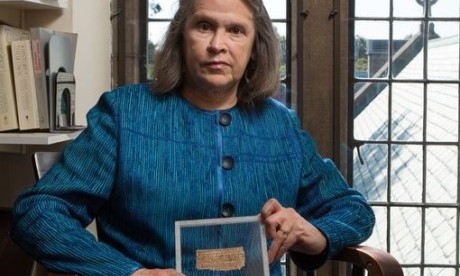Next time Professor Karen King receives an oblong scrap of papyrus with an explosive text and an owner wanting to remain in the shadows, she will probably pass. It is now more than likely that the “Jesus had a wife” manuscript, which she sensationally unveiled in Rome a couple of weeks ago, is a fake. There is little point in repeating the arguments for forgery. Far more puzzling is how an intelligent woman like Professor King could possibly have fallen for it. The answer is a warning of the perils of confirmation bias. No one should feel that he or she would be immune.
The most egregious case of New Testament fakery was announced to the world in 1973 when Morton Smith, a scholar from Columbia University, published a book on the so-called Secret Gospel of Mark. Smith said that he found the text while working in the library of the ancient monastery of Mar Saba on the West Bank in 1958. It forms part of a letter purportedly by the third-century father St. Clement of Alexandria. It has since disappeared, but certainly existed since several other people saw it and even took photographs. It is now clear that the manuscript was a forgery, probably perpetrated by Smith himself. Again, the arguments, detailed in books such as Stephen Carlson’s The Gospel Hoax, don’t need rehearsing here.
The Secret Gospel of Mark seemed to be designed to suggest that Jesus was gay. The key lines read, “And after six days Jesus told him what to do and in the evening the youth comes to him, wearing a linen cloth over his naked body. And he remained with him that night, for Jesus taught him the mystery of the kingdom of God.” This looks carefully calibrated to be suggestive but not too revealing. (Morton Smith’s own sexuality is a matter of controversy. Almost no one of his generation was “out”; being so would have ended his career.) In any case, Smith hardly used Secret Mark in his subsequent book Jesus the Magician published five years later. This must be the only case of a scholar ignoring his own groundbreaking discovery, unless Smith felt the need to distance himself from the monster he’d created. Read more
Sources
- First Things
- Image: Examiner
